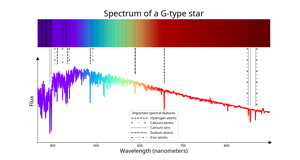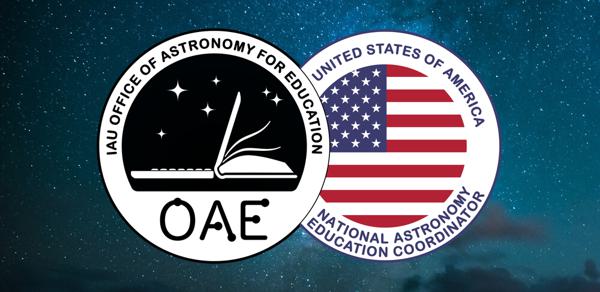Glossary term: G 型星
Description: 光譜類型為"G"的恆星。天文學家通過識別電離鈣的強吸收線來確定G型恆星;更廣泛地說,G型恆星中的金屬吸收線比更熱的恆星(如F型恆星)更強,而比更冷的恆星(如K型恆星)更弱。G型恆星的典型(有效)溫度在5200開爾文(K)到6000 K之間。與其他恆星相比,它們對人類肉眼呈現出黃色,除非存在顯著的星際或大氣層紅化現象。處於主序階段的G型恆星,即通過核聚變在核心區域將氫轉化為氦的恆星,被稱為黃矮星。太陽就是一個典型的G型黃矮星例子。
Related Terms:
See this term in other languages
Term and definition status: The original definition of this term in English have been approved by a research astronomer and a teacher The translation of this term and its definition is still awaiting approval
This is an automated transliteration of the simplified Chinese translation of this term
The OAE Multilingual Glossary is a project of the IAU Office of Astronomy for Education (OAE) in collaboration with the IAU Office of Astronomy Outreach (OAO). The terms and definitions were chosen, written and reviewed by a collective effort from the OAE, the OAE Centers and Nodes, the OAE National Astronomy Education Coordinators (NAECs) and other volunteers. You can find a full list of credits here. All glossary terms and their definitions are released under a Creative Commons CC BY-4.0 license and should be credited to "IAU OAE".
If you notice a factual or translation error in this glossary term or definition then please get in touch.
Related Diagrams
Spectrum of a G-type star
Credit: IAU OAE/SDSS/Niall Deacon
License: CC-BY-4.0 Creative Commons 姓名標示 4.0 國際 (CC BY 4.0) icons









